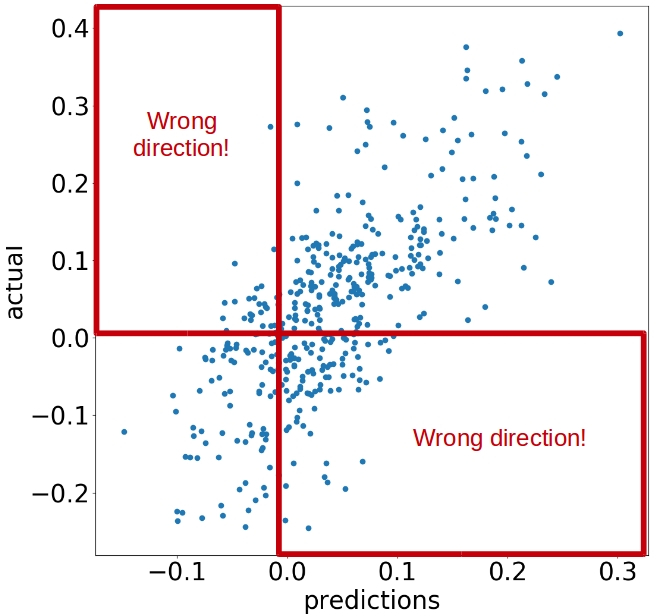Custom loss functions
Machine Learning for Finance in Python

Nathan George
Data Science Professor

MSE with directional penalty
If prediction and target direction match:
- $ \sum(y - \hat{y})^2$
If not:
- $\sum (y - \hat{y})^2 * \text{penalty} $
Implementing custom loss functions
import tensorflow as tf
Creating a function
import tensorflow as tf# create loss function def mean_squared_error(y_true, y_pred):
Mean squared error loss
import tensorflow as tf # create loss function def mean_squared_error(y_true, y_pred):loss = tf.square(y_true - y_pred) return tf.reduce_mean(loss, axis=-1)
Add custom loss to keras
import tensorflow as tf # create loss function def mean_squared_error(y_true, y_pred): loss = tf.square(y_true - y_pred) return tf.reduce_mean(loss, axis=-1)# enable use of loss with keras import keras.losses keras.losses.mean_squared_error = mean_squared_error
# fit the model with our mse loss function
model.compile(optimizer='adam', loss=mean_squared_error)
history = model.fit(scaled_train_features, train_targets, epochs=50)
Checking for correct direction
tf.less(y_true * y_pred, 0)
Correct direction:
- neg * neg = pos
- pos * pos = pos
Wrong direction:
- neg * pos = neg
- pos * neg = neg
Using tf.where()
# create loss function
def sign_penalty(y_true, y_pred):
penalty = 10.
loss = tf.where(tf.less(y_true * y_pred, 0),
penalty * tf.square(y_true - y_pred),
tf.square(y_true - y_pred))
Tying it together
# create loss function def sign_penalty(y_true, y_pred): penalty = 100. loss = tf.where(tf.less(y_true * y_pred, 0), penalty * tf.square(y_true - y_pred), tf.square(y_true - y_pred)) return tf.reduce_mean(loss, axis=-1)# enable use of loss with keras keras.losses.sign_penalty = sign_penalty
Using the custom loss
# create the model
model = Sequential()
model.add(Dense(50,
input_dim=scaled_train_features.shape[1],
activation='relu'))
model.add(Dense(10, activation='relu'))
model.add(Dense(1, activation='linear'))
# fit the model with our custom 'sign_penalty' loss function
model.compile(optimizer='adam', loss=sign_penalty)
history = model.fit(scaled_train_features, train_targets, epochs=50)
The bow-tie shape
train_preds = model.predict(scaled_train_features)
# scatter the predictions vs actual
plt.scatter(train_preds, train_targets)
plt.xlabel('predictions')
plt.ylabel('actual')
plt.show()

Create your own loss function!
Machine Learning for Finance in Python

